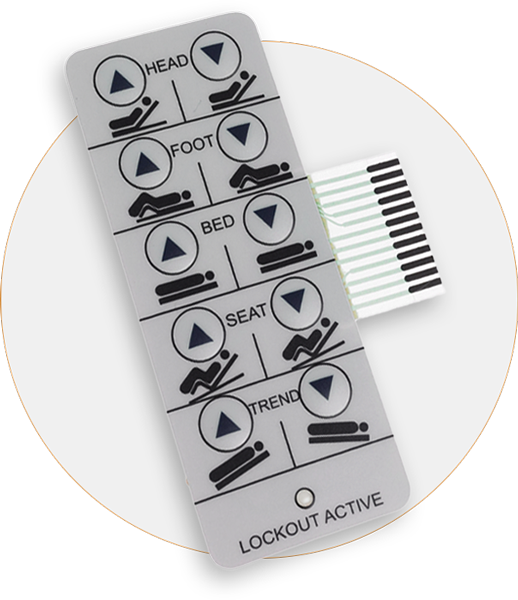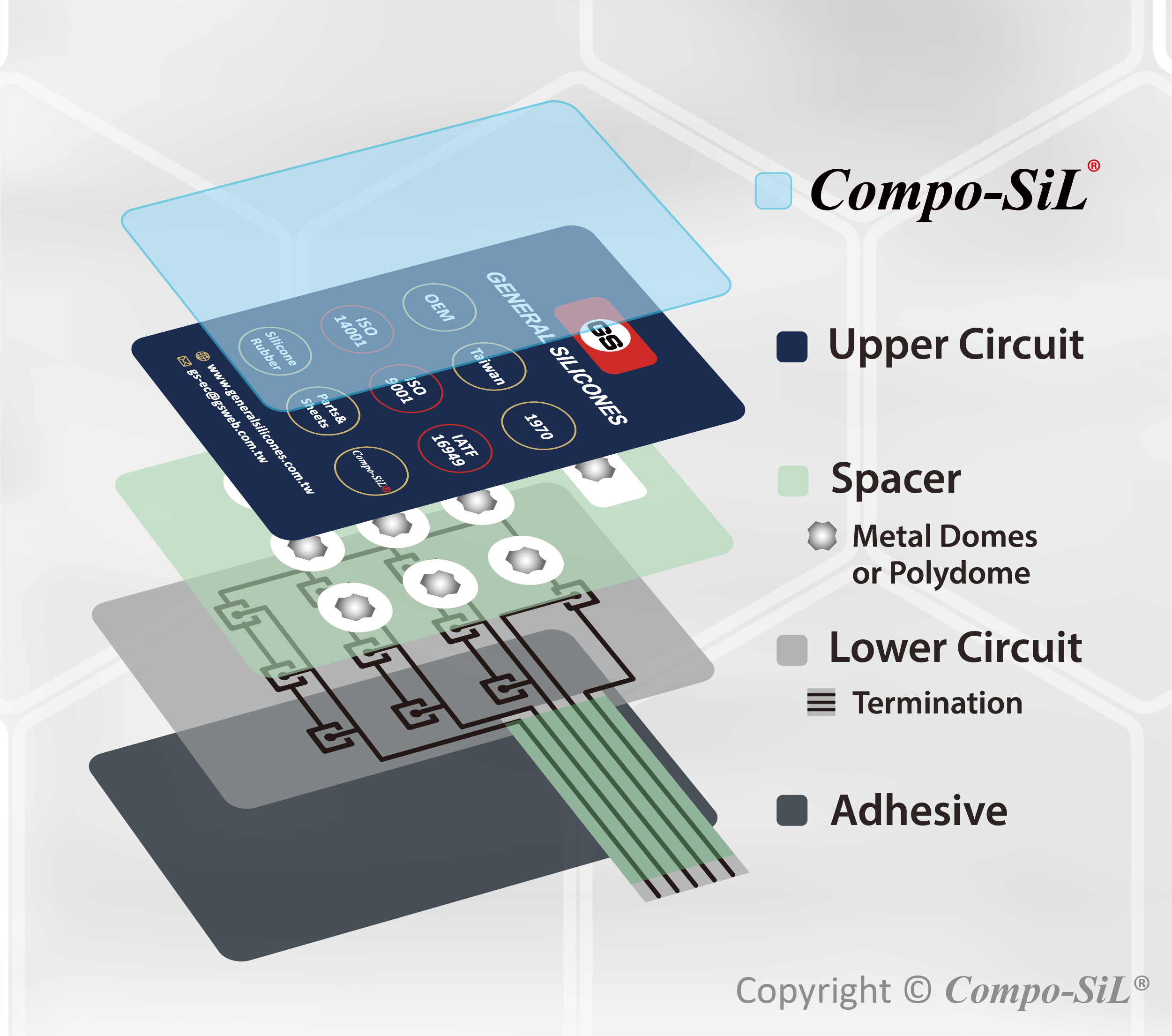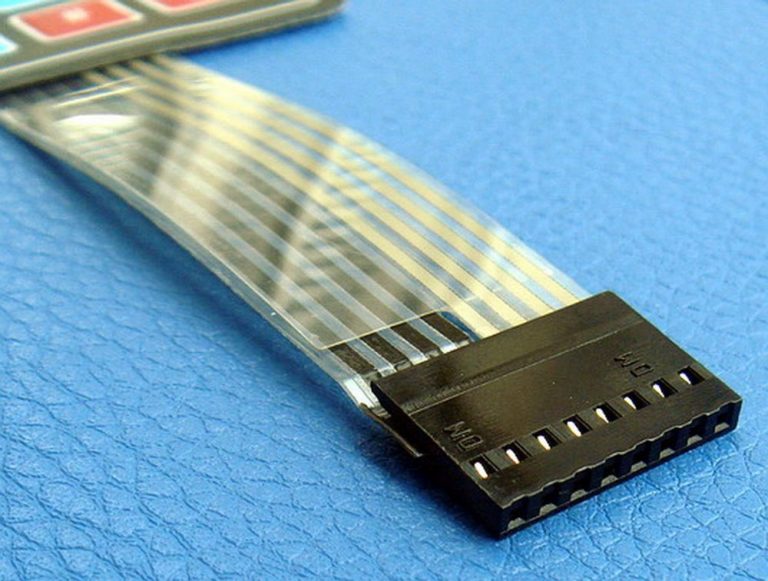Ensuring Quality and Longevity with Membrane Switches in Electronics
Ensuring Quality and Longevity with Membrane Switches in Electronics
Blog Article
Recognizing the Significance of Membrane Switches in User Interfaces
Membrane buttons are indispensable components in the style of efficient customer interfaces, facilitating not only capability but likewise improving visual allure and user interaction. Their distinct functions, such as resistance to adjustable layouts and ecological factors, make them suitable for a diverse range of applications across several markets. As we discover the various advantages and future trends related to Membrane technology, it comes to be clear that these switches are more than simply components; they represent a merging of innovation and practicality. The implications of this modern technology on customer experience deserve checking out better.
What Are Membrane Buttons?

The spacer layer, which includes adhesive residential or commercial properties, enables the separation of the circuit layer from the overlay, making sure that the button continues to be in a non-activated state until pressed. When pressure is related to the overlay, it presses the spacer layer, linking the void and completing the circuit in the underlying layer. This design not just minimizes the physical area required for typical mechanical switches yet additionally improves the resilience of the device, as Membrane switches are usually immune to dust, dampness, and other ecological aspects.
Generally located in applications varying from customer electronic devices to clinical gadgets, Membrane switches are integral to modern-day technology, giving a effective and straightforward user interface that aligns with modern design needs.
Advantages of Membrane Switches
While many button innovations exist, Membrane Switches deal distinct benefits that make them particularly desirable in numerous applications. One of the key advantages of Membrane buttons is their portable style, which permits space-saving implementations in gadgets where actual estate is limited. Their thin account not only enhances visual charm yet also assists in light-weight building.
An additional significant advantage is their resistance to ecological variables. Membrane switches are commonly sealed against wetness, dirt, and pollutants, making them optimal for use popular atmospheres, such as medical tools and commercial equipment. This longevity prolongs the lifespan of the button, decreasing upkeep prices and improving dependability.
Moreover, Membrane switches can be customized to meet particular layout needs, integrating special graphics and colors that enhance customer interaction. Their tactile responses alternatives can likewise be customized to give a satisfying user experience. Additionally, Membrane switches are affordable, especially in high-volume applications, as they can be created successfully.
Applications in Various Industries

In the consumer electronic devices field, Membrane switches prevail in tools such as microwaves, washing machines, and remote controls. Their tactile feedback and visual alternatives boost customer experience while offering a smooth, contemporary appearance. In addition, automotive producers use Membrane buttons in control panel controls and infotainment link systems, where space is limited, and individual interaction is essential.
Moreover, the industrial industry leverages Membrane switches in control panels for machinery and equipment, permitting for instinctive procedure in often severe atmospheres. Their resistance to chemicals and wetness makes sure durability and dependability in these applications. Generally, the flexibility of Membrane Switches contributes substantially to their extensive usage, making them important in various technical domains.
Layout Factors To Consider for Membrane Switches

When developing Membrane buttons, a number of crucial considerations must be taken into consideration to make certain optimum performance and individual experience. Firstly, the selection of products is vital; choosing durable, high-quality substratums can improve the switch's durability and resistance to ecological aspects such as dampness and temperature fluctuations.
Secondly, the layout of the graphic overlay need to prioritize quality and ease of usage. Symbols and text must be understandable, and the design needs to facilitate intuitive interaction (membrane switches). Furthermore, responsive responses is crucial; incorporating a tactile dome or various other mechanisms can boost the user experience by supplying physical confirmation of activation
One more important aspect is the button's electrical efficiency. Developers should guarantee that the conductive traces are effectively developed to lessen resistance and avoid signal interference. This includes analyzing the required actuation force and making certain compatibility with the electronic components they will interface with.

Future Fads in Membrane Innovation
As modern technology continues to advancement, Membrane buttons are poised to develop dramatically, driven by innovations in products and making methods. One arising fad is the incorporation of advanced materials, such as conductive inks and adaptable substratums, which improve longevity and reduce the overall weight of Membrane switches. These products not just boost the responsive response but also enable for the style of buttons that can hold up against harsher ecological problems.
Furthermore, the integration of touch-sensitive innovations is transforming conventional Membrane Switches have a peek here into more interactive individual interfaces. Capacitive touch sensors embedded within Membrane switch panels can offer a much more receptive and instinctive customer experience, straightening with the expanding need for streamlined, modern-day layouts in customer electronic devices.
In addition, improvements in printing strategies, such as electronic and 3D printing, allow fast prototyping and personalization of Membrane switches. This flexibility allows manufacturers to react extra promptly to market needs and customer preferences.
Finally, sustainability is becoming a significant emphasis, with suppliers discovering green products and processes. As these trends unravel, the future of Membrane innovation guarantees enhanced capability, visual charm, and environmental duty, strengthening their function in advanced interface throughout different industries.
Verdict
In verdict, Membrane Switches represent a crucial component in the style of customer interfaces, integrating capability with aesthetic versatility. As advancements in innovation link proceed, the evolution of Membrane buttons is anticipated to further fine-tune customer interfaces, driving development and boosting usability in a progressively intricate technological landscape.
Membrane buttons are indispensable components in the style of reliable individual interfaces, assisting in not only capability however also improving aesthetic appeal and individual interaction.Membrane Switches offer as an important element in numerous customer interfaces, promoting a smooth interaction in between customers and digital gadgets.While countless button innovations exist, Membrane Switches offer distinctive advantages that make them particularly desirable in various applications.Additionally, Membrane buttons can be customized to satisfy certain design needs, including unique graphics and colors that enhance customer interaction.In verdict, Membrane Switches stand for an essential component in the layout of user interfaces, integrating functionality with aesthetic adaptability.
Report this page